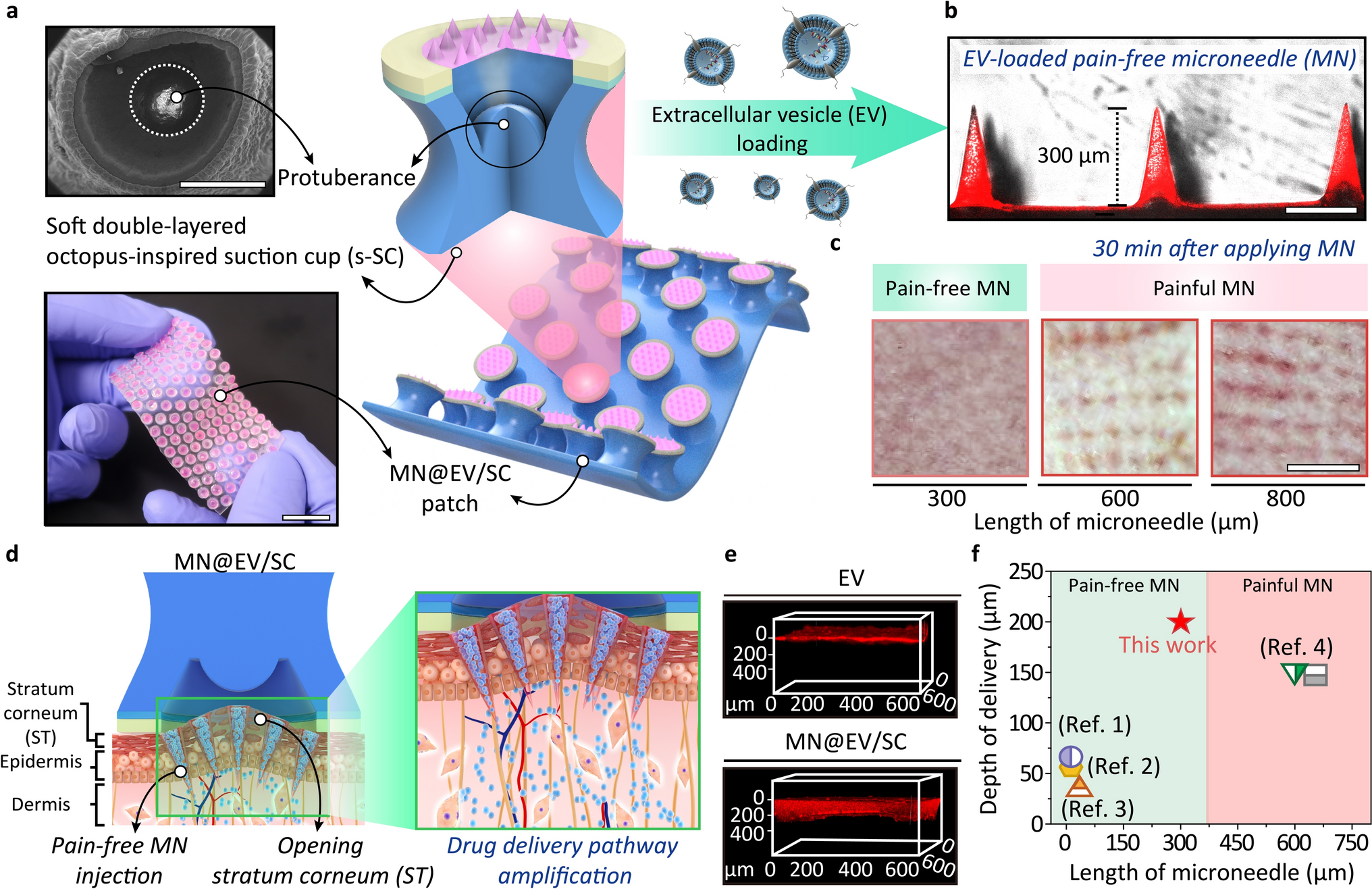A Hierarchical Short Microneedle‑Cupping Dual‑Amplified Patch Enables Accelerated, Uniform, Pain‑Free Transdermal Delivery of Extracellular Vesicles
Published in Bioengineering & Biotechnology and Materials

Transdermal delivery of biologics like extracellular vesicles (EVs) holds great promise for regenerative medicine and dermatological therapy. However, the stratum corneum poses a formidable barrier, especially for large and delicate molecules such as EVs. While microneedles (MNs) offer a minimally invasive solution, long needles (≥600 μm) often cause pain and irritation, and short needles struggle with limited penetration depth. Now, researchers from Sungkyunkwan University, led by Prof. Changhyun Pang and Prof. Jae Hyung Park, have developed a bio-inspired, dual-amplified transdermal patch (MN@EV/SC) that enables pain-free, uniform, and deep delivery of EVs using short microneedles.
Why This Matters
- Pain-Free Delivery: The 300 μm microneedles induce minimal stress response, comparable to chemical adhesives, while achieving a penetration depth of 290 μm—comparable to much longer needles.
- Dual Amplification: By integrating EV-loaded dissolving microneedles with an octopus-inspired soft suction cup (SC), the patch enhances skin adhesion and opens up nanoscale pathways in the stratum corneum for deeper drug delivery.
- Biological Function Preserved: EVs encapsulated in hyaluronic acid (HA) maintain their structural integrity and therapeutic functions, including promoting fibroblast proliferation, collagen synthesis, and oxidative stress resistance.
Innovative Design and Features
- Hierarchical Structure: The patch combines short dissolving MNs with a soft double-layered suction cup that generates localized negative pressure, enhancing skin penetration and patch adhesion—even on curved or moist skin.
- EV Stability and Release: EVs retain their bioactivity during fabrication and storage at room temperature for up to 7 days, enabling practical clinical use.
- In Vivo Efficacy: In middle-aged mice, the MN@EV/SC patch significantly increased dermal thickness, reduced senescence markers (p16, p21), and enhanced collagen deposition, demonstrating its anti-aging and regenerative potential.
Applications and Future Outlook
- Dermatological Therapy: The patch offers a minimally invasive, user-friendly platform for delivering EVs and other biologics to treat skin aging, inflammation, and hair-related disorders.
- Scalable and Electronics-Free: The device requires no external power or mechanical components, making it ideal for home-use and point-of-care applications.
- Clinical Translation: With its excellent biocompatibility, pain-free application, and effective EV delivery, MN@EV/SC represents a promising next-generation transdermal platform for regenerative medicine and aesthetic dermatology.
This work highlights the power of bio-inspired engineering in overcoming biological barriers and opens new avenues for EV-based therapeutics. Stay tuned for more innovations from Prof. Pang and Prof. Park’s teams at Sungkyunkwan University!
Follow the Topic
-
Nano-Micro Letters

Nano-Micro Letters is a peer-reviewed, international, interdisciplinary and open-access journal that focus on science, experiments, engineering, technologies and applications of nano- or microscale structure and system in physics, chemistry, biology, material science, and pharmacy.






Please sign in or register for FREE
If you are a registered user on Research Communities by Springer Nature, please sign in